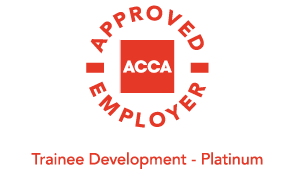MANAGING LEADERSHIP TRANSITION
Published 21 October 2019
Successfully managing a change in leadership can be difficult for any business.
Good communication and proper planning are key. A change of leadership should be viewed as both a challenge and an opportunity for any business. If you are promoting existing managers, you should be prepared for some challenging times. The transition into the top team is demanding and around 50% of new business leaders fail within 18 months of taking on their new leadership role. This is because longstanding management issues are only likely to surface once the new team is in place, and often they can take the new management team completely by surprise.
However, with proper succession planning, any nasty surprises can be avoided. A change in leadership can also provide the opportunity to move in a new direction, develop new products/services, enter new markets or drive innovation.
It is important for new business leaders to remain positive, regardless of the challenges they face. If the management team is positive and communications are up-beat, this is likely to influence the staff across the wider business and they are more likely to view the leadership change favourably. Changes in leadership often mean changes to processes, and different expectations. The changes should be communicated as an opportunity for the firm to develop and grow.
Deal with resistance quickly. Not everyone will adapt to a leadership change in a positive way. As soon as you identify team members who are resistant to change, speak with them to find out why. What are the areas that most concern them? Is their resistance negatively affecting other team members? It is the job of the management team to encourage and help team members understand the reasons for the changes and to help them accept it. Sometimes the best way to win over dissenters is to give them a change management project to own and run. This makes them part of the solution to the problem.
A leadership change is not the time to close your office door, step back and see what happens. Staff from all levels across the business should be encouraged to submit ideas and suggestions on how they can help with the transition. The leadership team should take time to understand the capabilities of the various departments across the firm. They should encourage debate and welcome both positive and negative feedback as part of the process.
THOUGHT LEADERSHIP
Thought leadership can be a very effective marketing tool but successfully implementing a thought leadership strategy is a lot harder that it sounds.
A thought leader is someone who, based on their expertise and perspective of an industry, offers unique guidance, inspires innovation and influences others. Their views on a particular subject are taken to be authoritative.
To become recognised as a thought leader by your peers, you are going to have to write, speak, produce content such as video, be interviewed and produce original ideas about the topic you want to specialise in. You need to be passionate about your topic or you are unlikely to succeed in becoming a thought leader in that area. Focus on a niche area – if your topic is too broad or is already covered by lots of other industry experts, you risk getting lost in all the noise.
Once you have identified your topic, consider the angle. Are you going to challenge conventional thinking? Have you got an original idea that helps you to stand out? Go beyond just collecting and disseminating existing information into useable chunks for your audience. Look at your target market – what challenges do they face in their business or personal lives. Perhaps there is a gap where your firm's product or service can help? Consider how you could go about educating your target audience in a way that adds value for them. Social media makes it easier than ever to disseminate thought leadership material. Start by producing a blog on LinkedIn. Set yourself a target to update your LinkedIn blog once a month, focusing on expressing and articulating your thoughts on your chosen topic in way that is relevant to your target audience.
Carry out research that relates to your topic, you could perhaps create your own online survey. Use that research to substantiate your point of view. Draw on your own customer data and use this to develop your thinking and report on your results. Over time, you will start to gain some recognition among your target audience. As your reputation builds, expand your range of communication channels to include articles for industry magazines, e-news updates, newsletters and posts on your company website.
Make yourself available to speak at industry conferences and be open to responding to enquiries from the media and trade press. The more you put yourself, your content and your views out there, the more your reputation will grow and develop. Make a point of sitting down at least once a year to create, review and update a rolling thought leadership plan. Consider what it is that you are trying to achieve and set out your objectives for your thought leadership in order to support your overall goals.
EFFECTIVE EMPLOYEE BENEFITS DON'T HAVE TO COST MUCH
Work life balance and flexible working benefits may be more valued than some of the more expensive employee benefits offered by some businesses.
Google is well known for providing everything from free food to onsite gyms, while Netflix has joined the bandwagon of firms offering unlimited holidays. What these employers demonstrate is that in the war for talent, large businesses are prepared to invest heavily in order to attract and retain the best people. Competitive pay and good benefits still factor into an employee’s decision to join and stay at a firm. However, the market is starting to focus on offering some other key benefits. To truly enjoy their jobs, employees must feel that their employers want to provide them with what they need to be successful in both their professional and personal lives. A recent study by Mercer identified three factors that employees are looking for in a company.
Flexibility
The nine-to-five workday is outdated. Regardless of industry type, flexibility is incredibly important to employees who are trying to get their work-life balance right. Firms that offer employees flexibility in the form of remote working, flexible schedules and the technology to work from anywhere are attracting the best people. Flexible working has also been linked to reduced levels of workplace stress, better employee well-being and increased productivity. The best firms have created a culture of trust. They trust their employees to self-manage and get the job done.
Health and well-being
Workplace wellness initiatives show employees that their employers truly care about their health and well-being. To be successful, employee wellness programs need to be customised and include a wide variety of wellness initiatives such as fitness activities, onsite health screenings, providing standing desks and regular ‘lunch and learn’ sessions. To truly make a commitment to employee health and well-being, employers need to lead by example and create a culture of wellness across the whole firm.
Working with a purpose
The next generation of talented employees are coming up through the ranks and they want to work for a firm with a purpose. They are willing to give up fancy offices and free coffee in exchange for getting to work on more fulfilling projects that make a difference. Modern employees want to feel their work is contributing to the greater good of society. In order to create a sense of purpose for your team, you should create a company vision, develop a reward and recognition system that encourages the right behaviour and educate your employees as to how their job impacts the firm, its customers and the wider community.
Location |
Registered as Auditors and regulated for a range of investment business activities in the United Kingdom by the Association of Chartered Certified Accountants Copyright@2018 Mayes Business Partnership Ltd 1974-2024
|











